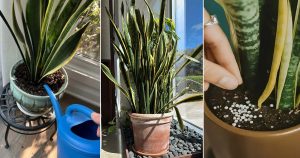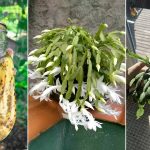Discover why your Christmas cactus is turning purple and how to bring its healthy green shades back before the holidays!
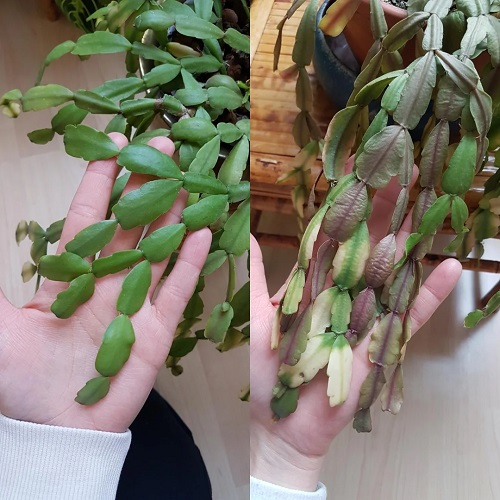
If your favorite Christmas Cactus has started to get purplish leaves, it is time to investigate. Something about its care isn’t sitting right. A shift toward purple or reddish tones usually explains stress or an underlying issue. Read more to find the most common causes and how to fix them for them to turn into pretty greens again!
What Does The Purple Color Mean?
Did you know that plants like the Christmas cactus produce the purple or red-hued pigment anthocyanin as a protective response to stress, and when you start to spot them, it is time for us to begin protecting them better?
Too Much Direct Light
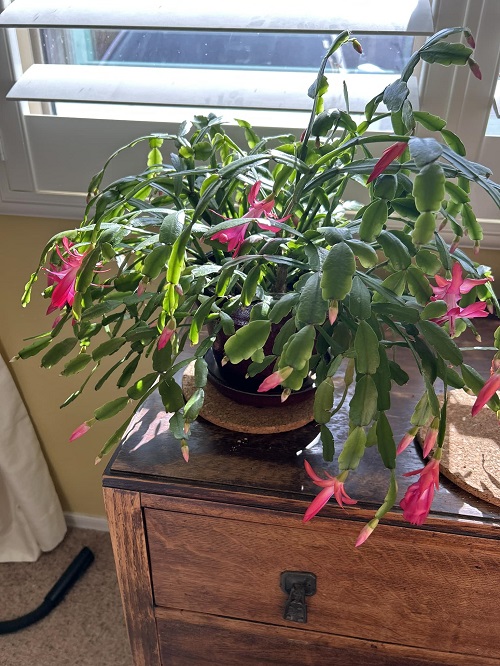
Christmas cactus comes from the rainforests, and they are naturally inclined towards receiving filtered light. When placed in bright, direct sunlight or around a hot, sun-facing window, it may turn purple as a protective measure. This often happens faster during summer or when placed behind glass that magnifies heat.
Nutrient Deficiency or Depleted Soil
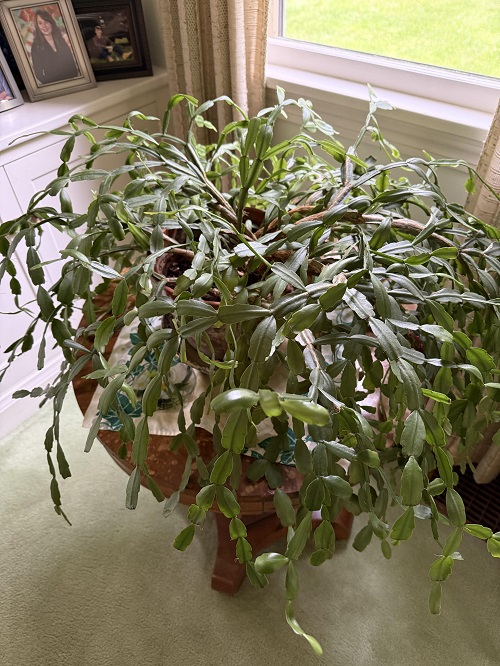
If the plant has been in the same pot or soil for years without refreshing or feeding, it may lack key nutrients like magnesium, phosphorus, or nitrogen. This nutrient deficiency can cause the stems to turn purple as the plant struggles to maintain normal functions. Old potting mixes also lose their ability to hold moisture evenly, which adds extra stress.
Root or Pot-Bound Issues
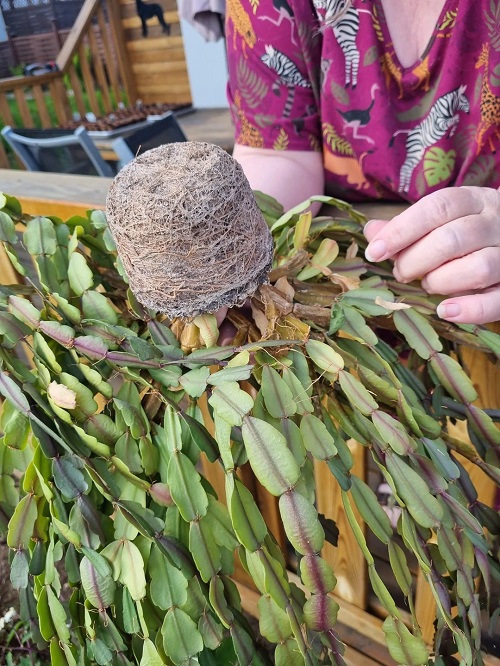
When the roots are overcrowded or the plant has been in the same pot too long, nutrient uptake and water absorption become difficult. Root damage or root rot that may occur from overwatering or poor drainage can lead to a change in color. Pot-bound plants also “signal stress” by producing tighter, thinner segments that may look bluish-purple.
Moisture Imbalance
The Christmas cactus prefers consistent humidity and moist but well-draining soil. Too little moisture can cause drought stress, and too much moisture results in root oxygen deprivation. Both conditions may lead to a purple color. Sudden changes in watering frequency, especially during blooming time, can deepen the purple tint.
Temperature Stress

Infrequent exposure to extreme heat or cold (for example, near a heating vent, or a black plastic pot that overheats) can lead to the leaves turning purple. Cold drafts from winter windows are one of the most common hidden causes people miss.
Natural Coloration
Some Christmas cactus varieties naturally develop a slight purplish edge in bright light or during cooler months. This isn’t harmful, but if the color becomes intense or spreads too quickly, it indicates stress rather than natural pigmentation.
How to Bring Back the Green Hues?
Adjust the Lighting

Move the plant to a spot with bright but indirect light. East or north-facing windows are the perfect match but avoid harsh midday sun or hot window counters. If your home has low light, use a grow light but keep it at a safe distance to avoid heat stress.
Add in the Nutrients
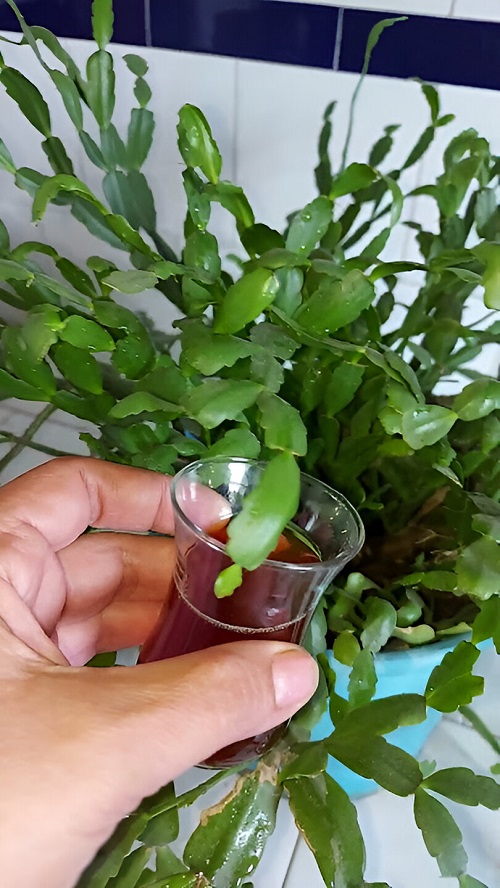
Feed your Christmas Cactus during the growing season (spring to late summer) with a balanced fertilizer at half strength. You can also alternate between a regular fertilizer and Epsom salt to avoid nutrient imbalances. A light dose of Epsom salts (for magnesium) once a month.
Check the Roots

If the soil is old, compacted, or the plant is root-bound, repot into a slightly larger container with a fresh, well-draining mix. Trim away any rotten roots if found, and ensure the drainage is good. While repotting, choose a breathable pot like terracotta to prevent accidental overwatering.
Correct the Watering Routine
Make sure the top few inches of soil are allowed to dry between waterings, especially during inactive periods. Improve humidity if your home is very dry in winter. Placing the pot on a pebble tray or clustering it with other plants can naturally raise humidity without overwatering.
Stabilize the Temperature
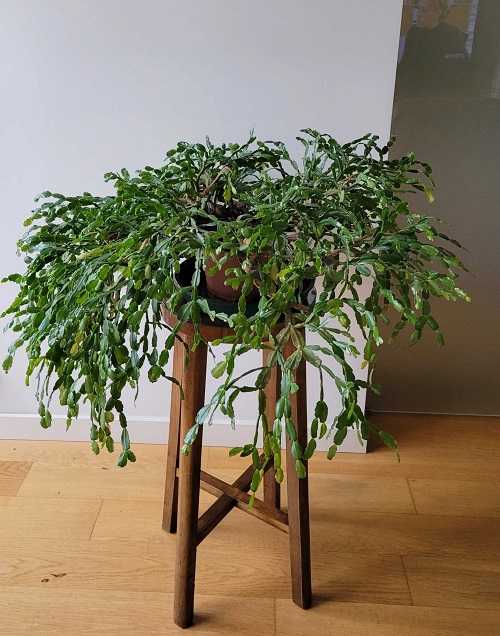
Keep the plant in comfortable indoor temperatures and away from direct drafts, heater vents, or very cold windows. Ideal temperatures range between 60–70°F (15–21°C), which also supports better bloom formation.
Check for Pests
Spider mites and mealybugs can also stress the plant and indirectly cause the leaves to appear purple. Inspect the joints and undersides regularly and clean the plant with mild soapy water if needed.
Note: If the stems are deeply purple already, they may not change fully to bright green. But by changing the environment and caring further, you can stop the damage and encourage healthier growth.
Seeing your Christmas cactus turn purple is painful, but it’s the plant’s way of telling you it’s under stress. And when your loved ones are under stress, you help them. Just like we did, it is time for you to now, to help them bloom again. Let us know how these hacks worked for you in the comments below!




